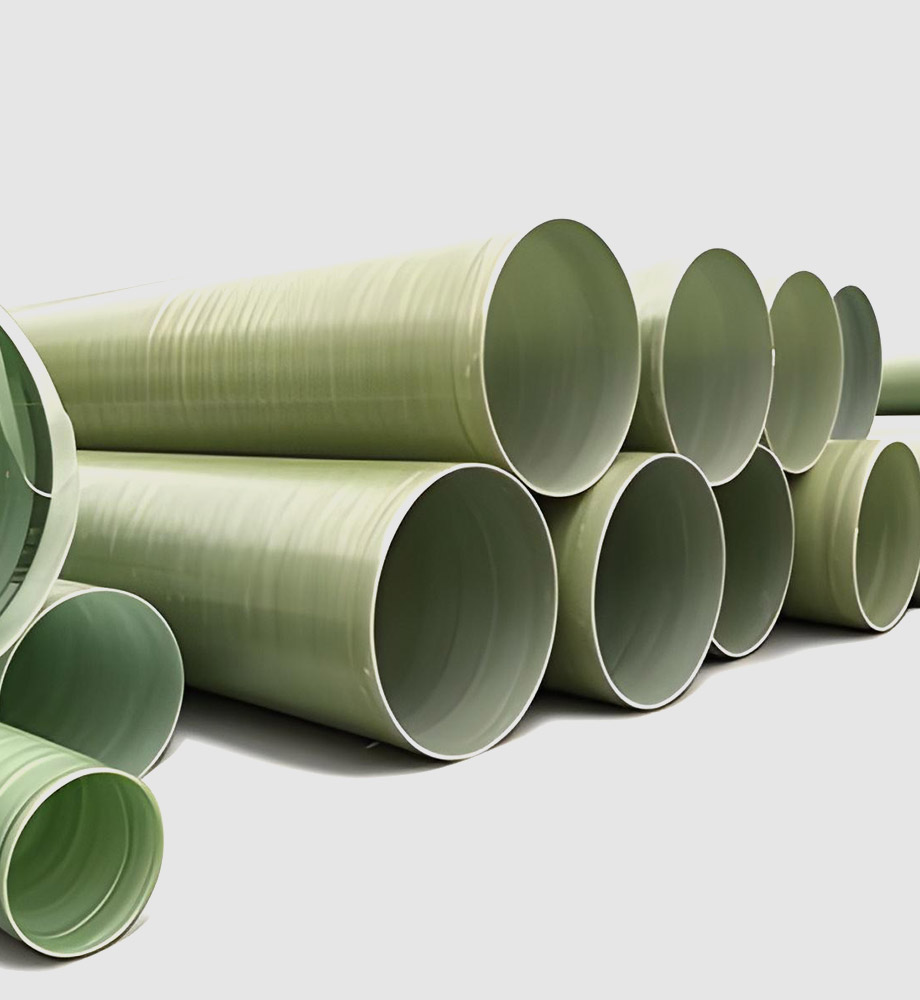Key Features
- Conductive Filaments: High-strength carbon/glass composite fibers woven into the laminate provide uniform electrical conductivity.
- Integrated Grounding: Inner-to-outer and end-to-end electrical continuity allows easy grounding of the pipe system.
- Corrosion Resistance: Inherits GRE’s excellent resistance to acids, salts, and fuels, with no risk of metal corrosion.
- Lightweight and Durable: Easier to install than metal. Suitable for buried or aboveground use without risk of electrochemical corrosion.
- High Temperature Rating: Uses aromatic-amine-cured epoxy for toughness and heat resistance (typically up to ~100–120°C).
- Reliable Jointing: Compatible with standard GRE couplings and flanges (but typically grounded at joints).
Benefits
- Enhanced Safety: Prevents dangerous static sparks in volatile environments, meeting electrical dissipation safety codes.
- No External Bond Wires Needed: Unlike plastic pipes that require external bonding, conductivity is built-in, simplifying installation.
- Lower Maintenance: No corrosion or coating to maintain, and static-dissipative layer won’t wear off like a metal liner.
- Regulatory Compliance: Often required or recommended by NFPA and API for fuel systems (e.g. MIL-P-29206A for jet fuel).
- Versatility: Can replace metallic piping in hazardous areas, reducing risk of galvanic corrosion while ensuring ESD protection.
Applications
- Jet Fuel and Aviation Fuel Systems: Primary lines and hydrant systems at airports or military bases.
- Fuel Terminals and Depots: Fuel storage and transfer lines, where static discharge is a concern.
- Chemical Processing: Handling of solvents, corrosive chemicals and any process where static ignition is hazardous.
- Pharmaceutical & Electronics: High-purity lines where static must be controlled, but metallic pipes are not preferred.
- Offshore Petrochemical: Bulk fluid transfer on platforms (e.g. jet fuel, kerosene) requiring both corrosion resistance and static safety.
Technical Specifications (Typical)
- Material: Filament-wound GRE with co-mingled carbon/glass fiber
- Size Range: Typically 1″–16″ (25–400 mm) inner diameter
- Pressure Rating: Up to ~230 psi (16 bar) depending on diameter
- Electrical Conductivity: End-to-end <105 ohm (groundable) when grounded
- Operating Temperature: Up to ~200°F (93°C) (carbon-filled epoxy)
- Standards: Designed per API 15LR / ISO 14692; MIL-P-29206A compliance for jet fuel
Unique Selling Points (USPs)
- Integrated Static Safety: Combines corrosion-resistant GRE with ESD protection in one product.
- Global Recognition: Bondstrand™ 7000 (and equivalents) have a long history in military and fuel installations.
- Proven Performance: Certified for jet fuel service; eliminates common static-hazard mitigations (e.g. conductive paint or wires).
- Seamless System: Comes complete with conductive flanges, fittings and adhesive couplings designed for groundability.
- Custom Solutions: Can be supplied with lined or unlined options to meet purity requirements while retaining conductivity.

